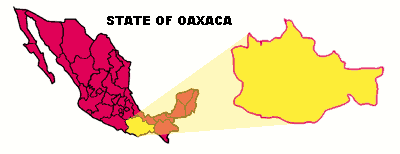
BAREFOOT BOYS MEXICAN TRIP N° 10
(By Noah Elhardt and Forbes Conrad, , 2006)
(All pictures by Noah Elhardt and Forbes Conrad)
P. orchidioides and P. heterophylla in habitat

After the dismal lighting at the last
P. orchidioides site, we were blessed
with not only a break in the drizzle that has been plagueing us for the last few
days, but also some sunshine! To add to that, the setting was drop dead gorgeous
and the plants pristine!
This location is north of Oaxaca city in the beautiful state of Oaxaca. On a
slope at 2200 m. grows one of the most enchanting forests I have ever been in!
The canopy consists of a mix of pines, oaks, and madrones (presumably
Arbutus glandulosa) with their smooth
red trunks. Sunshine sprinkling through this canopy makes an ever dancing
dappling of light on the forest floor. Adding to this bespeckled pattern were
layers of lichens and legions of Tillandsias clinging to the tree trunks.
.jpg) |
.jpg) |
Nestled on clay banks on the forest floor are clumps of
P. orchidioides, sending forth sprays of
purple flowers.
.jpg) |
.jpg) |
.jpg) |
.jpg) |
.jpg) |
.jpg) |
.jpg) |
.jpg) |
The plants here had noticably fewer "stolons" (more on that later) visible, which is understandable since they appeared to be earlier in their growing season.
.jpg) |
.jpg) |
.jpg) |
.jpg) |
Only a few clumps were in flower (most, however, showed buds), compared to the last site which had litterally hundreds of flowers covering small hillsides.
.jpg) |
.jpg) |
.jpg) |
Among the open flowers, there was some variability, with some of the larger plants exhibiting flowers with longer petals. There was some color variability as well, with flowers ranging from light to dark purple. Most flowers were darker than the pictures show.
.jpg) |
.jpg) |
.jpg) |
.jpg) |
.jpg) |
.jpg) |
.jpg) |
.jpg) |
.jpg) |
.jpg) |
In our last post on
P. orchidioides, we did a rather poor job of describing the way 'stolons'
grow from the species.
First, when the plants are forming hybernacula, they form gemmae similar to
those of temperate Pinguicula. Then, when the main plants begin to grow
the following year, the 'gemmae' also begin to grow. But they don't grow like
temperate Pinguicula. Instead, they etiolate from their growing points to form
long stems with spase leaves; perhaps these growths are stolons, but they don't
seem to follow the classical definition of a stolon. Then, when the end of the
etiolated stem is far enough from the parent plant, it stops etiolating, gains
roots and forms a new plant is established at its terminus.
Equally exciting at
this site were some plants that Fernando seems to have missed altogether on his
visit here. Growing mere yards from P.
orchidioides was a species that looked strangely out of place among the
detritus of the shaded forest floor: P.
heterophylla!!
.jpg) |
.jpg) |
The green plants were growing singly and were sparsely scattered in an area with perhaps a 10 meter radius. Oddly enough, there were only a dozen or two plants here, and we were unable to find any other plants anywhere on the hillside!
Upon closer inspection, however, we came across an apparent paradox: Some of the plants were forming plantlets on their leaf tips!
.jpg) |
.jpg) |
.jpg) |
Also, the plant habit was
much more similar to the P. medusina
plants we had seen than to our previous experience with
P. heterophylla. But this plant
couldn't be
P. medusina! After all,
P. medusina, as we all know, grows in
Gypsum soils and is red in colour! It's looking like
P. medusina is not a legit species at
all, and that color, soil preference, and plantlet formation are just
characteristics that vary between different P.
heterophylla populations.
Any thoughts on this?
Noah Elhardt and Forbes Conrad